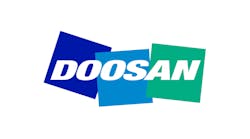More than 160,000 visitors from 82 countries made the trip to Hanover, Germany, to see the machine tools, cutting tools, technologies, complementary equipment and services offered by the more than 2,000 exhibitors at the show from September 14 through 21.
At press conferences, show-related events and in interviews, the common themes that came up were that manufacturing industries are expected to continue to grow through the end of this year and throughout 2006, and that the flow of jobs to China is expected to ease in the next 12 to 18 months. However, no matter who may have been expressing these themes, they continually returned to the idea that growth and global competition underline the need to become more efficient and to increase production output in every way.
In speaking about growth, many of the manufacturers acknowledge that there will be regional differences, but most expect the growth of manufacturing in China will continue to surpass every other nation, with manufacturing growth in India a close second. However, while growth estimates commonly ranged from 4 to 12 percent for specific regions or countries over the course of the next 15 months, no one said they foresee recession or declines in growth for that period. Many manufacturing estimates put growth in the U.S. and Europe in the 4 to 6 percent range.
The idea of China being the sink into which all manufacturing jobs will drain in the future is being cut short in that many manufacturers believe China is reaching a point of equilibrium in terms of its ability to capture manufacturing business from other countries. The reason for this is that manufacturers in China are seeing increased pressure to produce for their domestic markets rather than for export and that the companies that were the earliest to move manufacturing to China already have derived the greatest benefits from doing business there. Additionally, many manufacturers pointed out that logistics are becoming more challenging because China's transportation and support-industry infrastructure is being strained by the amount of business that has been moved there and, finally, they point out that manufacturers in China are increasing their uses of many of the machine tool technologies that were on exhibit at the EMO 2005 show. By using the same technologies available to manufacturers worldwide, the Chinese forfeit what has been up to now their greatest advantage - the availability of cheap labor.
So growing economies are feeding competition, and the fiercest competitors, whether they are in China, India, North America or Europe, will adopt and run the latest technologies available for machine tools, ancillary equipment, tooling and services in the brutal competition ahead.
Yamazaki Mazak introduces new controller, sees continued growth
Yamazaki Mazak Corporation, the Japan-based parent company of Mazak Corp. (www.mazakcorp.com) exhibited a broad range of technologies at its EMO stand including its own, sixth-generation CNC controller, the new "Mazatrol Matrix" that the company says is the most advanced CNC system available. Mazak is planning to introduce that controller at an event at its new technology center in Florence, Ky., in early November. Additionally, Yamazaki Mazak Corp. exhibited its Hyper Gear-510 high-speed laser profiling machine and the five-axis capabilities of its Vortex-1400 II vertical machining center that is designed for high-efficiency in machining large production parts.
The company also exhibited its new ultra-narrow line of machines that Mazak's President Brian Papke said have the smallest footprint of any machines with which they compete designed for the specified sizes of work pieces. For example, he said the UN-400 has the smallest footprint for any machine designed for components up to nearly 16 inches (400 mm) in diameter.
At a press conference at the show, Papke said the corporation saw sales increase in 2005, and expects additional increases in 2006. Europe and the U.S. each account for about 30 percent of the corporations sales, while Japan and Asia account for the remaining 40 percent.
Hardinge upbeat on growth in Europe and China
Elmira, N.Y.-based Hardinge Inc. (www.hardinge.com) combined the capabilities of a milling and a turning center on its new "Hardinge Quest LMC-42," machine tool exhibited at the show. The combined capabilities give the milling and turning center a profile as a lean manufacturing cell, according to J. Patrick Ervin, chairman, president and chief executive officer. The machine tool can be configured with as many as three spindles, two turrets and a 24-tool magazine to produce high-tolerance parts with exacting surface requirements of up to about 1.65 inches (42 mm) in diameter or for chucking work for components within a diameter of 4 inches (100 mm).
At his company's press conference, Ervin did not provide details but said he foresees a move into China through a partnership in Hardinge's future.
"I feel strongly about China, and about developing business there," Ervin said at a press conference at the EMO 2005 trade show. "If you are not making machine tools in China in four to five years, you will not be able to do business in that market," he added.
Haas sees growth through simple machining solutions
Haas Automation Inc. (www.haas cnc.com) exhibited a full line of 30 machines at the EMO trade show, including a larger vertical machining center aimed at mould makers; a new horizontal machining center; two new vertical machining centers with extended-Y-axis that the company says are designed to meet the needs of shops wanting additional Y-axis travel without stepping up to a larger machining center; and ultracompact rotary tables that are designed for small machining centers.
Peter Hall, managing director for Europe for the Oxnard, Calif.-based company, says his company's goal as being the machine tool maker for " Everyman" continues to lead to strong sales growth even in markets that are not robust.
DMG introduced nine new machines at EMO 2005
One of the leading diversified machine tool makers in the world, Germany-based DMG (www.dmgamerica.com) displayed its new machines and technologies at a huge stand with 60 exhibits at the EMO trade show.
One of the highlights of the company's exhibit was the new CTV 400 vertical turning center that is designed for smallto medium-sized parts of up to about 16 inches (400 mm) in diameter. It has dualtrack loading and unloading, easy access to the work area, and what the company says is a wear-free linear drive in the Xaxis with a 1-g acceleration rate.
At his company's press conference, Rƒdiger Kapitza, chief executive, said the new products DMG introduced at the show are fruits of the nearly $305 million (250 EUR) investment the company made on a variety of technologies over the past five years.
A unique, one-step gear hobbing system
One of the best examples of combined technologies that help to improve productivity was developed and exhibited by two German companies, Fette GmbH (www.fette.com) and Liebherr Verzahntechnik GmbH (www.leibherr.com).
The companies put together technologies originally developed for complex grinding operations that index and move a tool to several points on the work piece to produce a unique gear hobbing system that rough cuts, chamfers and finish cuts a gear on one machine with one tool.
Fette, a unit of the Leitz Metalworking Technology Group, designed the "Twist-Free Hob," the tool used in the system. The tool produces a helical gear with a highly finished surface in a one-step, dry-hobbing process.
Liebherr developed software based on applications used for its grinding machines. The software positions the tool to hob a work piece, then moves it to perform chamfering and moves it again so that the tool's finishing cutting edges are in position to complete the work.
For more information on EMO...visit americanmachinist.com


